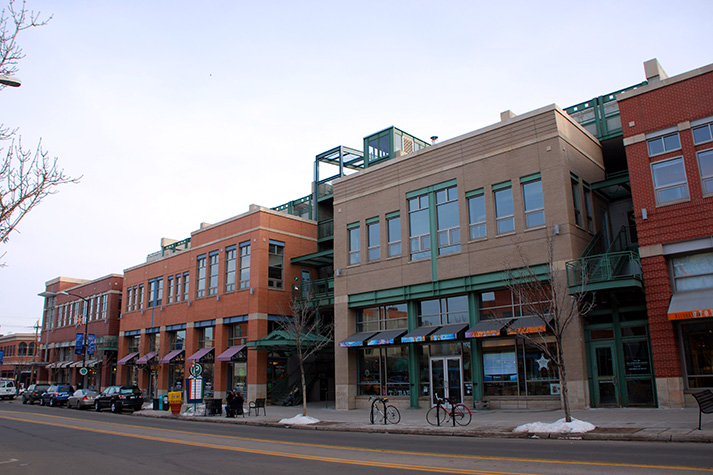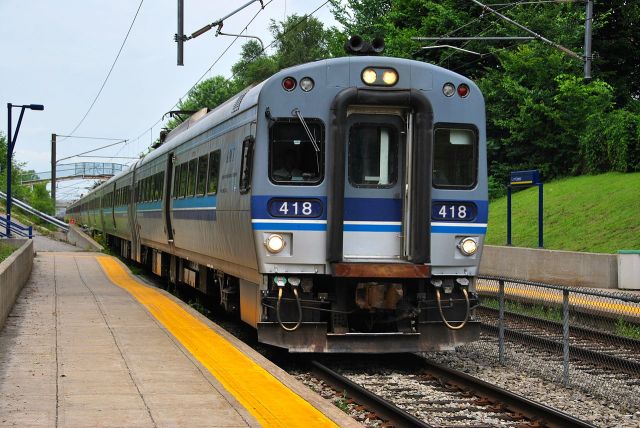I’m a bit late this year, but better late than never… so here’s my annual summary of the development of Canadian commuter rail in the year 2019.
The changes introduced in 2019 have been a long stream of good news in Ontario, a mixed bag in Québec, and as usual there is no news at all from British Columbia.
Frequency
Now that I’ve been doing these summaries for a few years, I can show some trends over time. Here is the frequency of Canadian commuter rail lines by operator:
At the start of 2015, most GO Transit routes only operated in the peak period in the peak direction, while AMT (now RTM) routes also had a few off-peak trips. But now at the start of 2020, many GO routes have all-day service far exceeding that of their Montréal counterparts.
This year’s rising star has definitely been the GO Transit Kitchener line, which reached 23 trains per day, surpassing both the GO Transit Barrie Line and the RTM Deux Montagnes line. Combined with the UP Express and Via Rail services which share the line, the railway now carries more than 100 scheduled passenger trains per day in each direction – a first for any Canadian railway.
The Kitchener Line had a rocky start to the year, with the January schedule being
widely criticized for failing to meet the afternoon ridership demand, as well eliminating the only westbound express train. These changes were hastily addressed in February, with the reinstatement of the 16:50 express train and a net increase of one trip in the afternoon peak period. In April, the south platform at Bramalea station was put back in service despite still being under construction, which allowed a new morning peak trip to be introduced between Bramalea and Toronto, and the existing trip from Malton to also extended back to Bramalea.
The biggest change to the line came on the 31st of August, when hourly evening service was introduced between Mount Pleasant and Toronto, several off-peak trips were extended the full route to Kitchener, and a second westbound express trip to Kitchener was finally introduced. Of the new off-peak trains extended to Kitchener, the most useful must be the 09:51 arrival in Toronto, which replaces two bus trips which formerly got stuck in rush-hour traffic, thereby saving 11 minutes for passengers formerly riding the express bus from Kitchener and a whopping 44 minutes for passengers formerly riding the local bus from Guelph.
On the GO Transit Stouffville Line, trains began running on weekends starting on the 2nd of November 2019, with hourly service between Toronto and Mount Joy. Evening service was also reinstated at the same time – this had been temporarily cancelled last year to facilitate construction on the railway widening.
On the GO Transit Lakeshore West line, some more former deadhead (not-in-service) train movements now allow passengers to board, providing some stunningly quick express trips for people who happen to be heading the same way as those trains. This year’s new in-service trips run non-stop from Aldershot to Long Branch Station every half hour between midnight and 2AM. From Long Branch Station, passengers can continue in to central Toronto using the 24/7 service on the Queen Streetcar or can head north into Etobicoke using the night service on a couple bus routes. But Burlington Transit’s bus service to/from Aldershot station ends around midnight, so they are not actually that useful for passengers and I have not included them in the totals for frequency.
For the first time since I started making these commuter rail summaries in 2014, there has actually been a frequency improvement on a line in Québec. On the 12th of September, two new evening trips were added on the RTM St Jérôme line, bringing its total to 15 and putting it ahead of its neighbour, the Vaudreuil-Hudson line.
Meanwhile Montréal’s Deux-Montagnes line continues its downward spiral, which I’ll discuss at the end of this post.
Speed
This year has been unusually positive in terms the speeds, in contrast to typical years where time is incrementally added to schedules to reflect increasing congestion in trains and along railways.
The biggest improvement has been on the GO Transit Kitchener Line, where in September the travel time was reduced by 5 minutes between Kitchener and Georgetown thanks to a track upgrade project undertaken by Metrolinx (the agency which owns GO Transit). Based on the
statements of the Metrolinx CEO, this ongoing project is expected to produce even greater time savings in the next couple years. But even so, the fastest morning peak period train from Kitchener to Toronto is already 21 minutes faster than it was in 2014.
Small travel time savings also appeared on the Lakeshore West line between St. Catharines and Hamilton, as well as on the Lakeshore East line. I do not know if these are due to infrastructure improvements or if they are simply incremental adjustments to tighten some overly-pessimistic schedules.
Permanent closure of Mont Royal Tunnel
Starting the 30th of March 2020, the Mont Royal Tunnel linking Montréal’s Gare Centrale
will be permanently closed to mainline rail traffic, to be instead converted for use by the new Réseau Électrique Métropolitain (REM) metro line. The railway currently serves the RTM’s Deux-Montagnes line and Masouche line, and has the potential to be used for existing VIA Rail intercity services to Jonquière and Senneterre and the planned intercity service to Québec City via Trois Rivières.
The Deux-Montagnes line was Canada’s only mainline rail line using electric multiple units. (Image: Wikipedia user mtlfiredude)
I am a strong supporter of the first phase of the REM project, which connects Gare Centrale to the south shore and introduces new rapid transit service to many underserved areas. But I do not think the line should be extended north through the Mont Royal tunnel at the expense of mainline railway traffic.
At the moment, the tunnel is only used by the RTM’s Deux-Montagnes and Mascouche commuter lines, the former of which will be directly replaced by the metro. If it were only the passengers from Mascouche being inconvenienced, this would definitely be a worthwhile tradeoff, but it is not. VIA Rail operates also service along the Mascouche line, with service to Shawinigan and onward to Jonquière and Senneterre. Those trains are currently unable to use the tunnel because they are operated by single-mode diesel locomotives and instead take a route which is 17 minutes slower than the route via the tunnel. But VIA has been
planning to purchase some dual-mode locomotives, which would allow the service to use the tunnel, finally bringing more reasonable travel times to nearby cities such as Shawinigan. VIA’s planned high-frequency intercity service from Montréal to Québec City is also planned to use the north shore line via Trois-Rivières. Both of these VIA services will be cut off from the rest of the VIA network by the REM project, and I wouldn’t be surprised if the lack of direct downtown-to-downtown connection is enough to kill VIA’s high-frequency service to Québec via Trois-Rivières altogether.
To accommodate passengers on the existing and planned mainline rail services on the north shore, the REM project includes a “Correspondance A40” station where mainline trains will terminate and passengers need to transfer to the metro to continue to Gare Centrale. With metro service every few minutes and only a couple stops along the way, this is not a particularly large time cost to passengers, but the added inconvenience and complexity is often a major mental impediment for prospective intercity passengers, who are quite often from out of town and tend to place a high importance on trip simplicity.
Instead of converting the Deux-Montagnes line to a metro, the project could instead upgrade the line with its current EMU technology, implementing many of the same upgrades such as double-tracking and grade-separations. The frequency on the line will undoubtedly be lower than the 2-minute headways the metro system could provide, but given that the trains are much longer, the capacity would be about the same and direct rail service from central Montréal along the north shore could be maintained and expanded.








